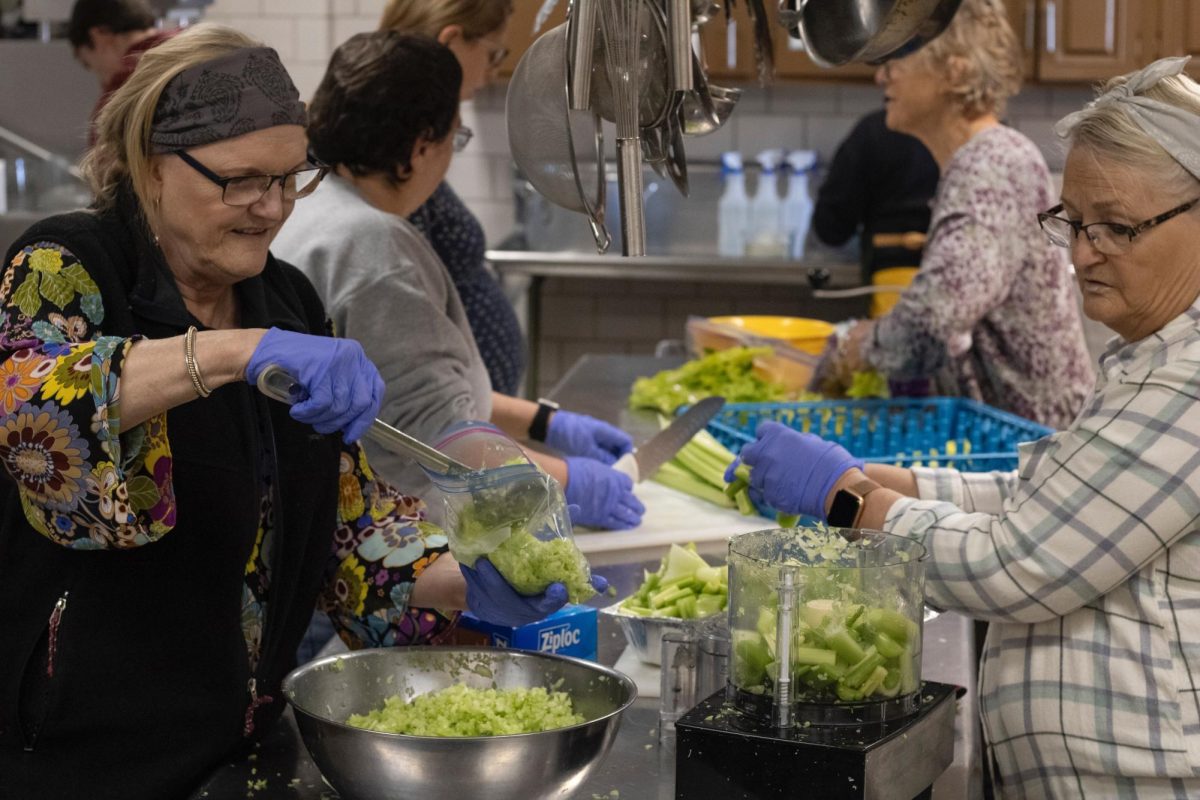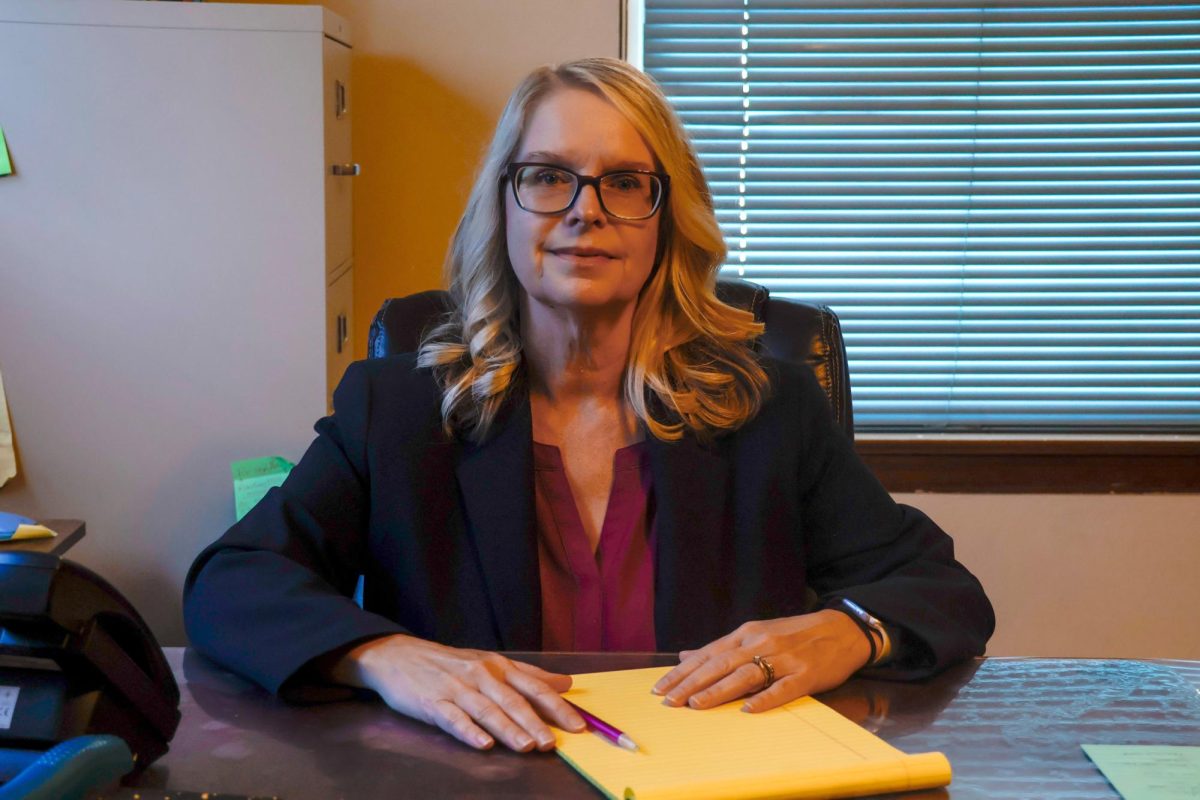When 94-year-old Bob McKnight entered the Herrin House of Hope in the morning, the volunteers were preparing for the day’s service. He’s a well-known figure in Herrin, serving as a pastor in a Baptist Church in Herrin for over 50 years. So, when he led the morning in prayer, many of the volunteers stopped what they were doing to hear him.
McKnight is often involved at the House of Hope and said that he was concerned about the issue of hunger.
“There’s people out there that’s homeless, and people out there that’s hungry,” McKnight said. “It’s a good cause, and things is free for people who don’t have anything…”
Advertisement
Although McKnight spoke about Herrin, which is a small town of just over 12,000 people, what he said reflects a broader issue in the United States – food insecurity. According to feedingamerica.org, more than 47 million Americans deal with the issue of hunger and more than 50 million have used food assistance from places like the Herrin House of Hope.
In southern Illinois, Feeding America estimates that 16%, or around 8,520 people, experience food insecurity in Jackson County, and 14%, or around 9,400 in Williamson County.
With more than one out of ten people in these two counties experiencing food insecurity, the need for access to food for everyone grows. But for the people in the front lines of this work, things aren’t always easy. Amy Simpson has been working in the field for over 15 years.

“The kids love Pop Tarts,” Simpson said. “I won’t buy them. They’re too expensive.”
Empty grocery bags, topped with Ramen noodles, pudding cups, crackers and other food items lined the tables, waiting to be filled. The walls were lined with supplies, and the back shelves were sparsely filled with boxes.
Simpson runs a charity in Carterville, Illinois called Gum Drops which makes bags of food for students in schools throughout Carterville. “I take the money, the donations, very seriously, and I make it go as far as I can. So, that is something that I do not buy,” she said.
Volunteers create hundreds of these bags weekly, which are delivered to local Carterville schools. “Gum Drops began in 2008 with 12 children,” she said. “And now we’re currently pushing about 13,000.”
Advertisement*

students Oct. 29, 2024 at Gum Drops in Carterville, Illinois. Volunteers will prepare
hundreds of these bags throughout the week.
The bags go to at-risk children in southern Illinois. “Most of the kids get free and reduced lunches and breakfasts at school,” she said. “This is to help them on the weekends until they get back on Monday.”
But over the years that Gum Drops has provided its services, the charity has experienced its share of difficulties, especially after the COVID-19 pandemic. “We couldn’t get food, first off, from Sam’s Club or anything… You could only get five cases,” Simpson said. “I need 50 to 70 cases a week to feed all these children.”
Simpson said that the rising prices of food have affected Gum Drops. “Last year…was the first year since we started that, [for] 3 weeks, I couldn’t feed the kids: I didn’t have the money,” she said. “I’m sure it hurt the families terribly as well because you know they’re already struggling to find groceries and put gas in their car to try to go to work…”
But it’s not just young families that are affected by the rising prices. “I’m at the age that I’m living it one day at a time,” McKnight said.
Recently, McKnight suffered a stroke and had to be taken to the hospital, which affected his medication. Since he doesn’t have a retirement plan, money is short for him. “When I had this stroke, they put me on a particular medication,” he said. “And this pill costs $700 for a month of medication.”
But higher prices affect the average person in southern Illinois in ways that are not always obvious to our wallets.
Lisa Cherry, the administrative pastor of the Victory Dream Center in Carbondale, Illinois, was working at the pantry Wednesday Nov. 20, 2024. A line formed outside of the foodbank in the bright midday sun, almost reaching the road.

Carbondale, Illinois. (Enan Chediak)
The Victory Dream Center has been offering free food and supplies to the Carbondale Community for about 16 years. “About 10 years ago, we began to change and have a larger variety of food,” Cherry said.
Cherry said that they are connected to the St. Louis Food Bank, which supplies food shipments to Carbondale and throughout southern Illinois, but it also serves as a connection to grocery stores for overstock items. “We’re one of the largest of their agencies in this region, receiving food from Sam’s and Aldi’s and Walmart and places like that,” Cherry said.
“We are not able to get everything we need from the St. Louis Food Bank,” Cherry said. “Donations are dependent on what’s going on in other domains of our economy and whatever’s going on in the corporate world. And so sometimes those supplies are high and sometimes they’re not. But the needs of the people and the inflation and the food [have] been constant.”
Cherry said that she has been concerned about the possibility of cutting back on spending because of the fluctuating prices. “If we have more cuts…in the supply chain and we don’t see a relief in our prices at the grocery store, our neighbors are going to be hurt,” she said.
The Victory Dream Center is also trying to get involved in measures that will help to stretch supplies. “On a regular basis, we will go to the microphone and talk about how to stretch your dollar – how to take the food we have out there and make it something that’s attractive, which is a constant need,” Cherry said.
The hope is that perishable items will last longer through these measures. “I’ve really seen an increased participation of some of our ladies that have been coming here for years that’ll say, ‘Hey, I’ve figured out how to make the bread last. I’ve figured out how to pre-cook the vegetables so that they don’t spoil…’”

(Enan Chediak)
Also, the charity has been changing what kind of food is offered to Carbondale’s homeless population. “Of course, we can’t hand them a bag of dried beans and get anywhere,” she said. “So, constantly we’re looking for solutions for people who have no cooking facilities [and] are not able to carry much with them at a time.”
In addition to serving the homeless population, the Victory Dream Center also serves a variety of demographics. “Sometimes I’ll notice particularly young moms coming in in various kinds of uniforms,” Cherry said. “When I talk to them, I find out that they’ve been working more than one job, but they simply cannot make all ends meet.”
In many circumstances, the government assistant programs are insufficient or unavailable, and people rely on resources like the Victory Dream Center. “You’ll find that a lot of our people are receiving government assistance in the SNAP program, but quite a few are not,” Cherry said. “We really like it that we’re able to be a bridge for those people who are not going to be qualified for other helps.”
By offering its services for free, these charities can help people from a variety of circumstances. Emily Howell came into the Herrin House of Hope Sept. 30, 2024 with her six children. They pushed two tables together in the corner of the red dining room near the window.
Howell says that she comes to the House of Hope one to two times a week. “It helps with the cost of food being able to eat here a few times a week,” she said. For three years, she has been homeschooling her children, and she said that one of the reasons that she comes to the Herrin House of Hope is that her children no longer have access to school lunches.
“We also have benefits because I’m not working right now,” Howell said. “But those benefits still only go so far with a family of eight.”
Regardless of where people come from, resources like these that give people access to food are becoming more necessary for people from varying walks of life. “I’m not going to turn any child away,” Simpson said.
“These are our neighbors,” Cherry said. “And I’ve come to see not just statistics; I’ve come to see their faces.”
Photo Editor Enan Chediak can be reached through Instagram @enanchediak or through email at [email protected]
Advertisement





















